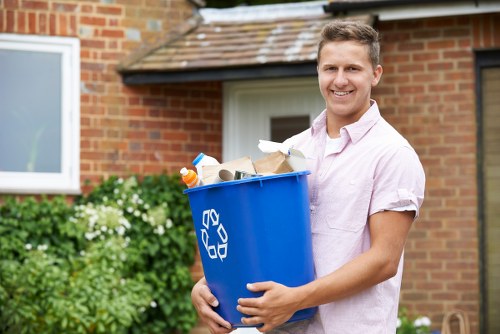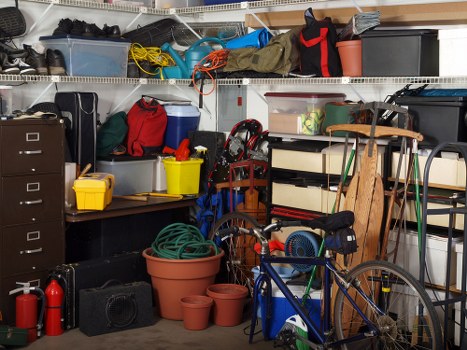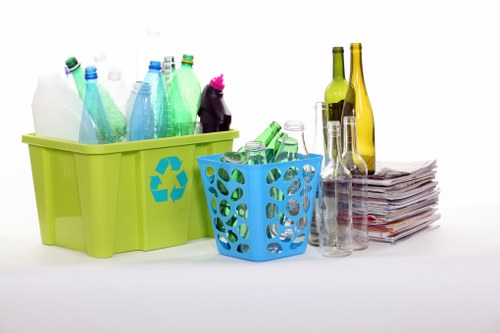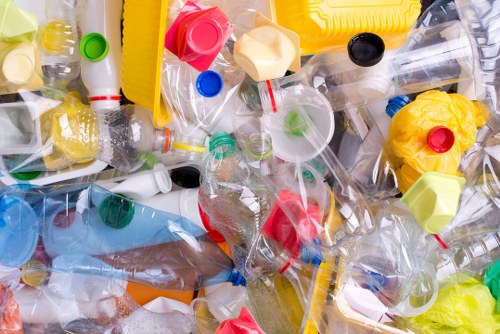Waste Clearance Lower Clapton
Understanding the Importance of Clear, Efficient Waste Clearance 
Waste clearance in Lower Clapton is not only a service but also a commitment to community health and environmental sustainability. In this bustling part of East London, managing household waste, construction debris, and commercial refuse has far-reaching effects on local well-being. Efficient removal practices reduce risks associated with pollution and help maintain clear public spaces. Residents and businesses alike demand high standards and eco-friendly strategies to keep their streets safe and clean. This article covers the many sides of waste clearance in Lower Clapton, providing insights into best practices that benefit everyone.
Local authorities collaborate with specialized waste clearance providers to ensure that debris and unwanted materials are handled responsibly. With a focus on recycling and sustainable disposal methods, the programs in Lower Clapton prioritize protecting natural resources and reducing landfill dependency. Importantly, these waste disposal systems not only help the environment but also improve overall quality of life. They serve as a reminder of how crucial clear waste management is to a thriving community.
Moreover, there is a growing recognition that waste clearance extends beyond mere removal—it is about preserving the local heritage and ensuring a healthier future for upcoming generations. As technology evolves, new techniques in junk removal and eco-conscious recycling continue to be developed, making the process increasingly efficient and less intrusive. This dedication to innovation ensures that Lower Clapton remains at the forefront of sustainable urban living.
The Impact of Waste Accumulation on Local Health and Environment 
The consequences of unmanaged waste in Lower Clapton can be severe, affecting community health and local biodiversity. When waste is not cleared promptly, it attracts pests and creates an ideal environment for disease-causing organisms. Proper clearance methods help mitigate these risks by ensuring that waste is either recycled or disposed of correctly. Local environmental groups actively campaign for better waste management practices as a cornerstone for protecting community well-being.
Residents have noted significant improvements in air quality and neighborhood aesthetics when effective waste clearance measures are implemented. In addition, the presence of professional waste management services reassures the public that hazardous materials are not being improperly dumped. As such, local authorities heavily monitor waste accumulation, especially in densely populated areas where the impact is more pronounced.
Furthermore, the integration of eco-friendly practices in waste disposal has become a priority in Lower Clapton. Providers are committed to reducing carbon footprints and ensuring responsible disposal of materials. By using recycling and repurposing techniques, these initiatives contribute substantially to a greener, more sustainable future that benefits not just Lower Clapton but the entire region.
Latest Trends in Waste Management and Eco-Friendly Initiatives 
In recent years, waste clearance in Lower Clapton has evolved with innovative processes that emphasize sustainability. Key trends include increased focus on **recycling systems**, integration of smart tracking technologies, and improved segregation practices. These developments reflect a broader global shift towards environmentally conscious waste management practices. Notably, residents are encouraged to recycle and participate in community clean-up efforts, making the entire process a shared responsibility.
Most local waste disposal companies now use advanced methods to sort and process different waste types. This way, the environmental impact is minimized as recyclable materials are redirected from landfill sites to more sustainable channels. By incorporating these advanced sorting techniques, companies can also ensure that hazardous waste is safely handled, thus safeguarding community health.
At the heart of these advancements is an emphasis on responsibility and innovation. Providers are investing in educational campaigns and community outreach to inform residents about best practices in waste management. As these new systems become widely adopted, Lower Clapton stands as a model of how local government and private firms can work together for a cleaner, greener environment.
The Role of Professional Waste Clearance Services 
Professional waste clearance services in Lower Clapton offer more than simple pick-up and disposal; they provide a comprehensive solution aimed at reducing clutter and environmental harm. These companies handle everything from household junk removal to commercial waste clearance by employing trained professionals who are experts in managing different waste types safely. Their work includes segregating recyclable materials, ensuring legal compliance, and prioritizing the disposal of hazardous substances.
Local businesses often rely on these services to maintain tidy working environments and support sustainability initiatives. The modern approach to waste management is a blend of technology, community engagement, and strict adherence to environmental standards. This teamwork between commercial entities and local governance is pivotal in driving forward the mission of reducing waste responsibly.
Additionally, many clearance companies in the area offer tailored solutions based on the volume and type of waste produced. Whether it’s a home, office, or construction site, each project is managed with efficiency and care. By using eco-friendly disposal methods, providers not only assist in reducing waste but actively encourage communities to adopt more sustainable lifestyles.
Eco-Conscious Strategies and Community Benefits 
Lower Clapton’s commitment to eco-friendly waste clearance has generated a model of sustainability for urban areas. By incorporating advanced recycling practices and minimizing landfill reliance, the community is poised to experience long-lasting environmental benefits. The increased transparency and accountability in waste management promote trust among residents, assuring them that their neighborhoods remain safe and livable.
Efforts in this region are measured through reduced waste volumes and improved recycling ratios. These encouraging signs are the direct result of persistent outreach initiatives and investments in green technology. It is clear that when communities embrace sustainable waste practices, they witness significant improvements in both environmental and social dimensions.
Furthermore, local schools and community groups have initiated educational programs to further spread awareness about eco-friendly waste practices. This collective effort not only helps to keep Lower Clapton clean but also establishes environmental stewardship as a community norm. The thriving move towards responsible waste disposal has become an inspiring example of how local action can yield global benefits.
Local Insights: Waste Clearance Services and Their Community Impact
Waste clearance in Lower Clapton is not an isolated service; it is deeply embedded in the social and economic fabric of the community. By ensuring that waste is managed effectively, local authorities and service providers contribute substantially to a higher quality of life. Efficient waste removal techniques prevent the spread of contaminants, reduce potential fire hazards, and play a critical role in supporting public health initiatives.
Many local businesses and residents appreciate the visible improvements in their surroundings once waste clearance is performed. The presence of organized, professional services instills a sense of confidence and well-being. It creates an environment where community members actively participate in maintaining public spaces and take pride in their neighborhood’s appearance.
Alongside the operational benefits, these services bring about economic opportunities. The local waste management sector creates jobs and supports related industries such as recycling, demolition, and environmental consultancy. In this way, effective waste clearance acts as a bridge between maintaining environmental standards and fostering economic growth.
Understanding the Whole Spectrum of Waste Types
The term 'waste' covers a wide array of materials, far beyond simple household refuse. In Lower Clapton, waste varies from biodegradable kitchen scraps to specialized industrial waste. Each category demands a different approach to clearance and disposal, making the role of professional clearances all the more critical. Recognizing these differences allows for more precise and safe removal processes, ensuring that harmful materials do not contaminate the environment.
Household junk removal often involves bulky items that cannot be easily recycled. By contrast, commercial waste may include sensitive documents or electronic equipment that require secure, environmentally sound disposal. By distinguishing between these types, waste clearance services can create customized plans to handle everything from demolitions and renovations to daily household clean-ups.
The process begins with comprehensive waste audits to determine the volume and type of waste produced. This level of detailed analysis enables the design of appropriate collection and disposal protocols. It also helps in setting benchmarks for future preventative measures, encouraging both residents and businesses to minimize waste production at the source.
How Technology Is Enhancing Waste Clearance
Technological advancements have transformed waste clearance operations in Lower Clapton. Modern technologies such as GPS tracking, automated scheduling, and data analytics help streamline routes and improve efficiency. These smart systems save time and reduce fuel consumption, contributing to overall environmental conservation. Contractors can now monitor every step of the waste management process, ensuring transparency and accountability.
The integration of digital tools offers significant advantages in recycling initiatives. For example, sensors installed in waste collection bins alert companies when they need emptying, reducing unnecessary trips and lowering carbon emissions. Moreover, advanced sorting facilities use machine learning algorithms to separate different types of recyclables accurately, increasing efficiency and decreasing contamination rates.
This tech-driven revolution has not only improved operational performance but also bolstered community trust. When residents see improved services brought by innovative solutions, they are more likely to support further initiatives aimed at keeping their environment clean. Such combined efforts of technology and community participation lead to sustainable urban development.
Local Area Spotlight: Exploring Nearby Communities
Lower Clapton is surrounded by several vibrant communities that share common concerns regarding waste management. For instance, Dalston is just a few miles away and is known for its lively arts scene, which has also sparked local initiatives for cleaner living spaces. Residents in Dalston often collaborate with those in Lower Clapton to host joint clean-up events and recycling drives.
Another notable neighbor is Hackney, which blends traditional and modern influences, resulting in a diverse urban landscape. Hackney's approach to waste clearance is equally innovative, utilizing community programs that educate citizens on waste segregation and recycling. Such cooperation between areas highlights the importance of cross-community participation in effective waste management.
Other nearby areas include Bow and Leyton. Both areas face challenges similar to those in Lower Clapton, with a high demand for proper junk removal and waste disposal. Their close proximity encourages sharing of best practices and collaborative ventures on environmental projects. These partnerships demonstrate a regional approach to tackling waste disposal and highlight the necessity for coordinated efforts.
Further to these, Mile End offers a unique perspective as it marries modern urban designs with rich cultural heritage. With a hybrid approach to waste clearance, Mile End emphasizes both recycling and community-driven environmental projects. Such initiatives are often mirrored in Lower Clapton, where the blend of modern solutions with community values drives progress.
Bethnal Green is also a key neighbor, recognized for its environmental activism and robust waste management policies. Residents here are active participants in discussions on reducing urban waste and promoting the use of eco-friendly materials. Their success stories create a roadmap for similar communities in and around Lower Clapton.
Additionally, areas like Shoreditch and London Fields also stand out for their proactive waste clearance strategies. These neighborhoods are well-known for their cultural vibrancy and innovative recycling programs that serve as an example for the rest of East London. Together, these communities forge a network that supports sustainable waste management across the region.
How Community Collaboration Enhances Waste Clearance
Community involvement is at the core of effective waste clearance in Lower Clapton. Residents, local businesses, and authorities engage in numerous initiatives to promote cleaner neighborhoods. From street cleaning events to local recycling competitions, every effort counts towards a healthier environment. In many cases, community groups have organized volunteering campaigns that address both immediate waste clearance needs and long-term sustainability goals.
When people work together, they not only achieve better waste clearance results but also build stronger social bonds. This sense of community cooperation creates a powerful network of support that helps maintain the environmental and aesthetic quality of Lower Clapton. Sharing resources, knowledge, and manpower is key to managing waste and inspiring future generations to embrace sustainable practices.
The ripple effect of such collaboration extends to local policy-making. As community members raise awareness about the benefits of efficient waste clearance, decision-makers are more inclined to invest in modern waste management solutions. This synergy between public participation and government action results in progressive environmental reforms that are beneficial to all.
The Future of Waste Clearance in Lower Clapton
Looking ahead, the future of waste clearance in Lower Clapton appears promising. There is a clear trend toward harnessing technology and fostering community-led initiatives to achieve greater efficiency. With continued investment in eco-friendly technologies and tighter collaboration between local authorities and waste management companies, the region is setting a benchmark for what modern waste clearance should look like.
Innovations such as real-time tracking systems, improved recycling methods, and better public awareness programs are expected to revolutionize how waste is managed. These innovations will help Lower Clapton reduce its overall waste footprint while ensuring that the community continues to thrive. The road to a cleaner, healthier environment is paved with commitment and continuous improvement.
Furthermore, ongoing research into waste reduction and resource recovery will likely bring even more efficiency to clearance services. With the industry's focus on sustainability, new practices will emerge to further reduce the environmental impact of waste disposal. The collective efforts of all stakeholders are paving the way for a future where waste clearance is as much about preserving nature as it is about maintaining order in urban settings.
FAQs on Waste Clearance in Lower Clapton
- Q: What types of waste clearance services are available in Lower Clapton?
A: Services include household junk removal, commercial waste clearance, demolition waste disposal, and eco-friendly recycling initiatives. - Q: How do local clearance companies ensure environmentally safe disposal?
A: They use advanced sorting technologies, follow strict legal guidelines, and promote recycling and repurposing to reduce landfill waste. - Q: Are there community programs to promote waste reduction in Lower Clapton?
A: Yes, local authorities and non-profit groups often organize recycling drives, clean-up events, and educational workshops focused on eco-friendly waste management. - Q: Can residents schedule bulk waste pickups or one-off clearances?
A: Absolutely. Many services offer flexible scheduling for both regular waste clearance and one-off bulk removals to accommodate varied needs. - Q: How does technology improve the efficiency of waste clearance?
A: Technology such as GPS tracking and automated scheduling minimizes fuel usage and optimizes routes, making the entire process more efficient and eco-friendly.
In summary, Waste Clearance Lower Clapton is a dynamic field that plays an essential role in maintaining the environmental and social stability of the area. With a solid focus on sustainability, community participation, and technological innovation, Lower Clapton continues to set an example for waste management practices. The combined efforts of professional service providers, local authorities, and active residents create a cleaner, healthier, and more secure community. By embracing these progressive strategies, Lower Clapton not only tackles its current waste challenges but also lays a solid foundation for future generations.
Overall, waste clearance initiatives in the community bring tangible benefits that extend well beyond cleaner streets—they foster economic growth, promote environmental responsibility, and strengthen the bonds among neighbors. With ongoing investments and community education programs, Lower Clapton is steadily moving towards a future where waste is not an issue but an opportunity for civic improvement. The shared commitment to eco-friendly practices is a testament to the spirit of cooperation prevailing within the community.
As we conclude this extensive exploration of waste clearance, it is evident that the approaches implemented in Lower Clapton have far-reaching implications. They resonate with trends seen in neighboring areas and are setting industry standards for sustainable waste disposal practices throughout East London. The commitment to innovative methods and continuous community involvement ensures that the local environment, both urban and natural, thrives for years to come.
